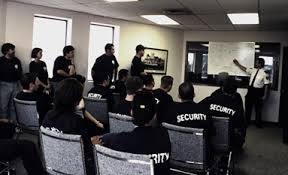Security Officer Basic Training

Security officer basic training provides a foundational understanding of the duties, responsibilities, and legal considerations inherent in the security profession. This comprehensive program equips trainees with the essential skills and knowledge needed to protect people and property effectively.
Core components typically include:
Legal and Ethical Framework
Understanding relevant laws, including those related to arrest, use of force, and liability.
Developing a strong ethical code of conduct and professional demeanor.
Learning about privacy laws and the proper handling of sensitive information.
Observation and Reporting:
Sharpening observational skills to identify potential security threats and suspicious
Mastering accurate and detailed report writing for incident documentation.
Learning effective communication techniques for relaying information to supervisors and law enforcement.
Emergency Response:
Training in basic first aid, CPR, and AED usage.
Learning how to respond to various emergencies, including fire, medical incidents, and security breaches.
Understanding emergency evacuation procedures and crowd control.
Access Control and Patrol Techniques:
Implementing effective access control measures, including verifying identification and managing visitor logs.
Conducting thorough and systematic patrols of assigned areas.
Learning to identify and mitigate security vulnerabilities.
Conflict Resolution and De-escalation:
Developing effective communication skills to resolve conflicts peacefully.
Learning de-escalation techniques to prevent situations from escalating to physical violence.
Use of Force (where applicable):
Understanding the legal framework and ethical considerations surrounding the use of force.
Learning the use of force continuum and appropriate levels of force.
Training in defensive tactics and restraint techniques (if authorized).
Customer Service:
Understanding that security personnel are often the first point of contact and must provide excellent customer service.
Learning how to assist people in a professional and courteous manner.
The training combines classroom instruction with practical exercises and scenario-based simulations to ensure trainees can apply their knowledge in real-world situations. Successful completion of basic training is often a requirement for licensure or certification as a security officer.


